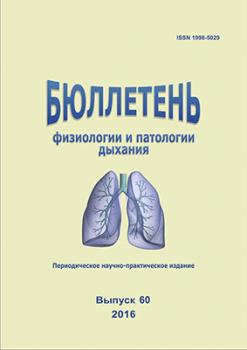Blagoveschensk, Blagoveshchensk, Russian Federation
Blagoveschensk, Blagoveshchensk, Russian Federation
Blagoveschensk, Blagoveshchensk, Russian Federation
Blagoveschensk, Blagoveshchensk, Russian Federation
Blagoveschensk, Blagoveshchensk, Russian Federation
Blagoveschensk, Blagoveshchensk, Russian Federation
Blagoveschensk, Blagoveshchensk, Russian Federation
Blagoveschensk, Blagoveshchensk, Russian Federation
The features of postnatal development in 160 women with physiologic course of pregnancy and with chronic placental insufficiency in the second trimester of pregnancy in the patients infected with the herpes simplex virus type 1 (HSV-1) were studied. The first group (the control group) included 30 women with physiologic course of pregnancy. The second group had 41 patients with chronic placental insufficiency of herpes etiology. The third group consisted of 89 women with chronic placental insufficiency and the threat of premature delivery caused by HSV-1. It was found out that in neonatal period of development and in the course of the first year of life the patients of the third group unlike the women of the second group oftener had bottle feeding (30.3 and 9.8%, respectively, р<0.05) and the period of breast feeding of less than 6 months (39.3 and 14.6%, respectively, р<0.05), and in the early childhood and infancy there was the combination of chicken pox and Botkin’s disease (39.3 and 7.3%, respectively, p<0.05), as well as enteritis and enterocolitis (28.1 and 7.3%, respectively, р<0.05). The women in the third group unlike the patients of the second group in the early childhood oftener had acute respiratory virus infections (40.4 and 14.6%, respectively, р<0.05) and lymphadenopathy (37.1 and 12.2%, respectively, р<0.05), and in the school and middle age there was algodismenorrhea (34.8 and 12.2%, respectively, р<0.05), cervical erosion (56.2 and 24,4%, respectively, р<0.05), a big number of gynecological operations (21.3 and 4.9%, respectively, р<0.05) and chronic rhinitis (47.2 and 19.5%, respectively, р<0.05). In the third group unlike the second one the signs of the secondary immunodeficiency prevailed. They were revealed through early infecting with VSH-1 (26.9 and 7.3%, respectively, р<0.05%), reactivation (identification of IgM to HSV-1) of chronic herpesvirus infection (21.3 and 4.9%, respectively, р<0.05%), thrush (16.9 and 2.4%, respectively, р<0.05) and relapsing course of Herpes labialis (22.5 and 4.9%, respectively, p<0.05). We suggest an important role of immunodeficiency in pathogenesis of the threat of premature delivery of herpes virus genesis in the second trimester of gestation and the necessity of the use of immunomodulatory medications for its treatment.
postnatal development, pregnancy, chronic placental insufficiency, the threat of premature delivery, herpes simplex virus.
1. Gapon M.N., Ternovskaya L.N., Akelina O.V., Zarubinsky V.Ya. Indexes of local cytokine status in individuals with intestine dysbacteriosis. Zhurnal mikrobiologii, epidemiologii i immunologii 2014; 6:73-77 (in Russian).
2. Kvitkina I.G., Gorikov I.N., Rabinovich B.A., Tal´chenkova T.E., Andrievskaya I.A., Ryzhenkova I.B. The clinical course of placental insufficiency in pregnant women with chronic herpes infection. Allergologiya i immunologiya 2005: 6(2):263 (in Russian).
3. Kipnis S.L., Trofilova E.V. Glucocorticoid function of the adrenal cortex with hypoxic damage to the central nervous system in newborns and young infants. Voprosy okhrany materinstva i detstva 1976; 21(12):9-14 (in Russian).
4. Kolosov V.P., Gorikov I.N., Sudakov A.G., Smirnova T.V., Ushakova E.V. Risk factors for the development of the threat of premature delivery in women with chronic herpes infection in the second trimester of pregnancy. Aktual´nye problemy sovremennoy nauki 2016; 5(1):24-25 (in Russian).
5. Novikova Е.Ch., Polyakova G.P. Infectious pathology of the fetus and newborn. Мoscow: Меditsina; 1979 (in Russian).
6. Ostanin A.A., Kustov S.M., Tyrinova T.V., Tikhonova M.A., Khonina N.A., Pasman N.M., Chernykh Ye.R. Immunological parameters in pregnant women in the early prognosis of development of fetoplacental insufficiency. Akusherstvo i ginekologiya 2010; 1:33-38 (in Russian).
7. Parenkova I.А., Kokolina V.F. Derangements in Formation of Reproduction System and in Quality of Life in Adolescent Girls Frequently Ailing with Respiratory-Viral Diseases. Detskie infektsii 2011; 10(1):21-24 (in Russian).
8. Sidorova I.S., Маkarov I.О., Voevodin S.М. Diagnosis and treatment of intrauterine infection in different periods of pregnancy. Akusherstvo i ginekologiya 2004; 2:3-5 (in Russian).
9. Solovieva A.S., Lutsenko M.T. Cytokine regulation of the systemic immune response in pregnant women with herpes virus infection. Dal´nevostochnyy meditsinskiy zhurnal 2009; 2:42-44 (in Russian).
10. Sorokina М.N., Skripchenko N.В. Viral encephalitis and meningitis in children. Мoscow: Меditsina; 2004 (in Russian).
11. Trushina E.N., Mustafina O.K., Nikityuk D.B. Intestinal lymphatic system and immunomodulatory effect of prebiotics. Voprosy pitaniya 2004; 73(6):49-53 (in Russian).
12. Tsinzerling А.V. Etiology and pathology of acute respiratory viral infections. Leningrad: Меditsina; 1977 (in Russian).
13. Shilenok I.G., Voshchenkova A.A., Kazakova M.A., Durmashkina T.V., Grebenshchikova V.N. Some indicators of the endocrine function of the pituitary, thyroid and adrenal in neonates with hypoxic-traumatic damage to the central nervous system. Voprosy okhrany materinstva i detstva 1990; 35(11):21-24 (in Russian).
14. Shmagel´ K.V., Chereshnev V.A. Immunity of pregnant woman. Мoscow: Меditsinskaya kniga; 2003 (in Russian).
15. Goh L.Y., Card T., Fogarty A.W., McKeever T.M. The association of exposure to hepatitis B and C viruses with lung function and respiratory disease: a population based study from the NHANES III database. Respir. Med. 2014; 108(12):1733-1740.





